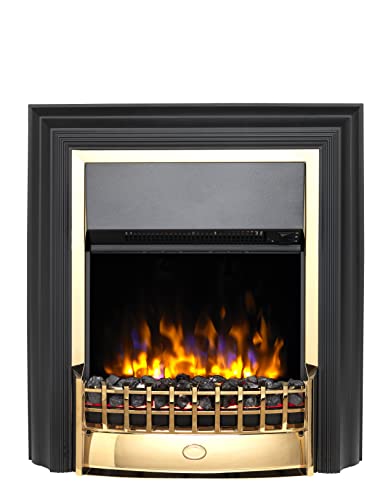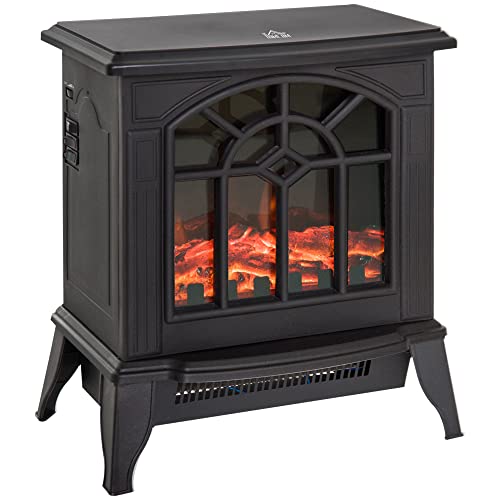این شرکت هیچ شغلی فعالی ندارد
چیزی درباره شرکت
Wood Burner Fireplace: The Good, The Bad, And The Ugly
How to Get the Most From a Wood Burner Fireplace
 Wood stoves, unlike traditional open fireplaces, are engineered to burn wood. This allows them to meet stricter emission regulations.
Wood stoves, unlike traditional open fireplaces, are engineered to burn wood. This allows them to meet stricter emission regulations.
 Wood burning stoves are renowned for their warm, yellow flames that dance, crackling sounds, and that primordial feeling of warmth. However, the smoke it creates contains carbon monoxide and toxic air pollutants, such as benzene, formaldehyde and polycyclic aromatic hydrocarbons.
Wood burning stoves are renowned for their warm, yellow flames that dance, crackling sounds, and that primordial feeling of warmth. However, the smoke it creates contains carbon monoxide and toxic air pollutants, such as benzene, formaldehyde and polycyclic aromatic hydrocarbons.
Efficient
Fireplaces and stoves that burn wood provide a beautiful and natural heat source to the home, they are also incredibly efficient. A quality wood stove can achieve an Ecodesign rating of as high as 77 percent. With the increasing cost of energy, it is essential to make sure you’re getting the maximum benefits from your log burner The good news is that this is much simpler than ever before!
The amount of moisture in firewood is a key factor that determines how efficient a stove that burns wood is. This is why we recommend only using seasoned wood which has been dried for a minimum of one year, and often two years. The dryer the wood is, the more efficiently it burns which results in less smoke and less harmful emissions.
A wood burning stove also is a low-carbon fuel source, which is beneficial to the environment. By purchasing locally sourced wood, you are also helping to support the active management and conservation of woodlands. This is beneficial for wildlife.
As far as maintenance is concerned, the only requirement of a wood burner is to regularly scoop up and dispose of the ash. It can be quite a challenge however it is worth it to get the maximum heat from every log. Furthermore that if you wait a couple of days for the ashes to fully cool and then reuse them to make an eco-friendly and non-toxic ice melt. They can also be used to polish jewellery and remove smells.
A fireplace with a wood burner is a timeless classic. While they’re not as popular than gas fireplaces, the appeal and charm of a fire that is roaring can’t be ignored. They’re ideal for cozying with on cold winter nights and are an ideal method of creating a warm and inviting space in the heart of your home. Investing in a high-quality wood burner will pay off for a long time. Our expert chimney sweeps are on hand to help you get the most from your stove. Give us a call today to learn more.
Low Carbon
Wood burners that are clean and efficient are among the most efficient ways to save money on logs while keeping your home warm. They also support local woodland management. This is a fantastic way to support wildlife in your local area.
Wood-burning fireplaces and stoves create very little pollution if they are maintained properly and used with dry, seasoned firewood. If they aren’t maintained properly or use wood of poor quality, the smoke that is produced contains fine particles, also known as particulate pollutants that can cause irritation to the lung organs and other body organs. It also contains carbon monoxide as well as toxic air pollutants like formaldehyde, benzene, and polycyclic aromatic hydrocarbons. Inhaling these types of air pollution may cause irritation of the lungs as well as wheezing, coughing, and asthma attacks. It could even cause serious health issues such as heart disease, cancer, or premature death.
Some people worry that using a wood burning stove could contribute to climate change, but this is not necessarily the case. Burning wood produces energy that is carbon neutral. The tree absorbs carbon dioxide throughout its life. When burned carbon dioxide is released into the atmosphere.
Since the wood is sourced locally, it reduces the amount of pollutants released in the process of transportation. It is crucial to choose hardwoods that have been seasoned and of top quality. They will burn longer and more evenly than softwoods.
Modern wood stoves, including the ones manufactured by Charlton & Jenrick, emit much less pollution than older stoves. They are certified to meet 2020 EPA standards that are significantly stricter than previous emission limits.
All wood-burning stoves must be fully vented to the outside of your home to ensure they do not create a haze of exhaust in your house. All our current DEFRA-exempt and clean burn stoves can create extremely clear exhaust by keeping the flames at a distance from the wood logs and by using dry and seasoned firewood.
A wood-burning stove that has a catalytic converter or a hybrid unit could provide the most efficient low-carbon heating solution. These units re-ignite the gasses and particulates from the initial combustion in a second stage by mixing them with superheated air. They then channel the remaining gasses and particulates through a catalytic combustion combustor for the third and final combustion, further decreasing emissions to levels much lower than the standards set by the government.
Clean Burn
Cleanburn wood stoves are engineered to burn fuel with the best efficiency possible. This results in minimal particles emitted into the atmosphere when burning wood. The stove’s air management system regulates the intake and venting of gases, making sure that the combustion process is conducted in a sealed, controlled environment. It also regulates the height of the flame to minimise emissions and maximise the heat output.
This means that your chimney as well as the surrounding area will be much cleaner than older stoves. Particulate matter (also known as particle pollution) from incompletely combusted wood can cause respiratory problems like wheezing and coughing in people and can contribute to the development of heart disease, stroke, diabetes and other serious health conditions. The smoke from wood combustion is a contributory factor in poor air quality in urban areas.
The smoke that is emitted from poorly combusted wood is a mixture of fine particulate pollution and hazardous air pollutants, including carbon monoxide volatile organic compounds, nitrogen oxides, benzene, formaldehyde and polycyclic aromatic hydrocarbons. These particles can penetrate deep into the lungs, as well as other organs causing discomfort, harm, and even death. Airborne dust can also harm the surfaces in your home and give the impression of a rough surface to rooms.
It is important to select top quality, seasoned, and dried firewood when you use your wood burner fireplace. Hardwoods such as oak, ash, and beech are the most efficient for heating. Hardwoods are incredibly dense and have a higher BTU than softwoods. They also provide more heat.
You should also determine if your local authority has any rules regarding wood burning. They could include rules for nuisance or odor and visible emissions, or smoke opacity limits.
If you have a wood burner with a glass door it is important to keep the glass free of grime and deposits. This can be done using a dry cloth or oven cleaner spray. Alternately, you can mix bicarbonate of a soda with a little water to the glass.
Regular maintenance is essential for your chimney and stove. Regular chimney cleanings are required to get rid of creosote and ensure that the flue is operating properly. Also, make sure you mark dates for inspections on a regular basis in your calendar, as this will help you avoid costly repairs and prolong the lifespan of your wood stove.
Low Maintenance
Many people prefer installing wood burning fireplaces because of the natural warmth they create. This kind of fireplace requires some maintenance and upkeep. The chimney, flue, and stove are all potential sources of house fires if not maintained and cleaned regularly. Fireplaces are also a great source of heat when the power goes out, especially during winter when snowstorms can cause branches of trees to fall and knock down under-hanging power lines.
Using a wood stove for heating will reduce your carbon footprint significantly in comparison to other fossil fuel sources such as gas. Modern wood stoves, inserts and fireplaces are built to comply with EPA standards (Environmental Protection Agency) which means that they produce very little emissions. The more well-seasoned wood is the more efficient it will be as well which means you’ll burn less of it to produce the same amount of heat.
They require some maintenance and attention, such as ensuring they are placed away from combustible materials and a screen is installed. Air flow will be improved by keeping the grate free of ash and other debris. This will ensure that the fire is burning longer and your home in good order. It is recommended that your stove and chimney swept at least once a year to prevent creosote build-up which could create a fire hazard and a clog that can restrict the flow of air.
A wood burning stove will need to be tended constantly and it could take some time for a new homeowner to understand how to light, ignite, and maintain a steady fire in the fireplace. Once you’ve mastered the art, your wood burning stove will be an excellent source of warmth and comfort within your home.
Wood-burning Fireplaces And Stove have been around in one form or another for nearly 500 years, and have rediscovered their popularity due to their efficiency, sustainability, and the natural warmth and scent of real wood. Talk with your local Regency dealer about the advantages of wood stoves or inserts for your home if you’re planning to purchase an upgrade to your heater.


